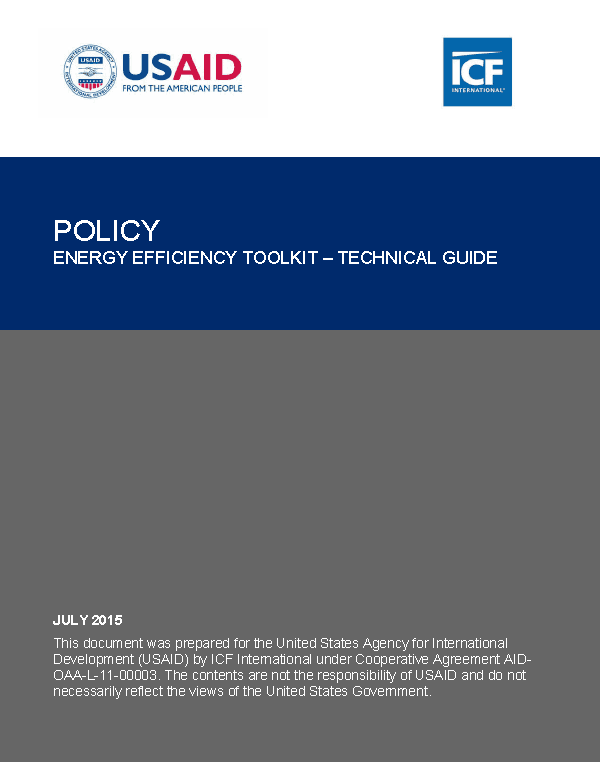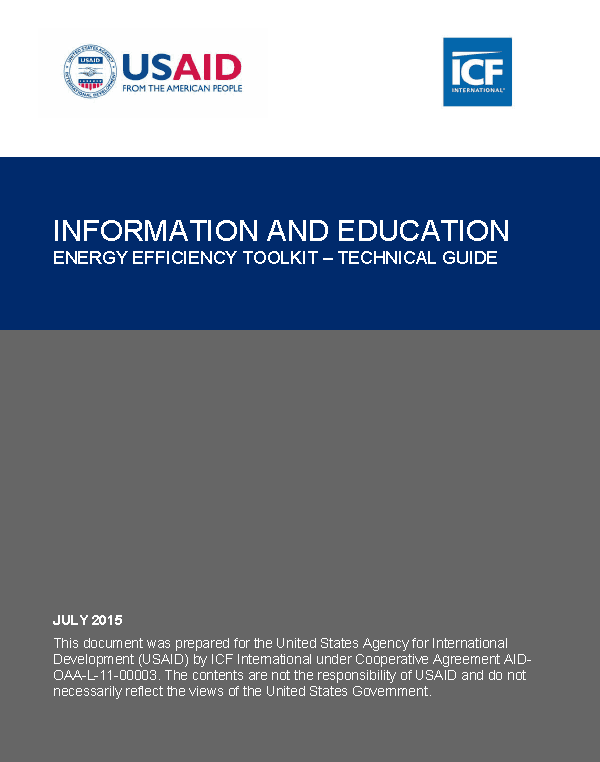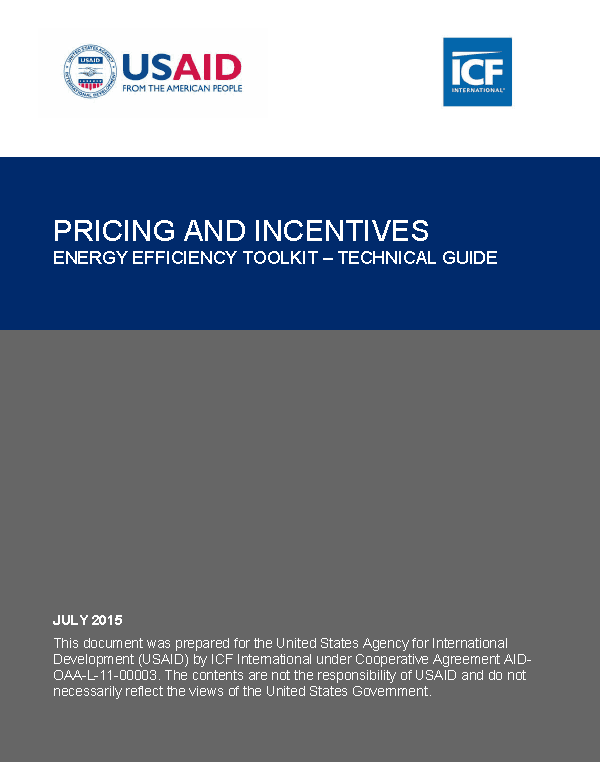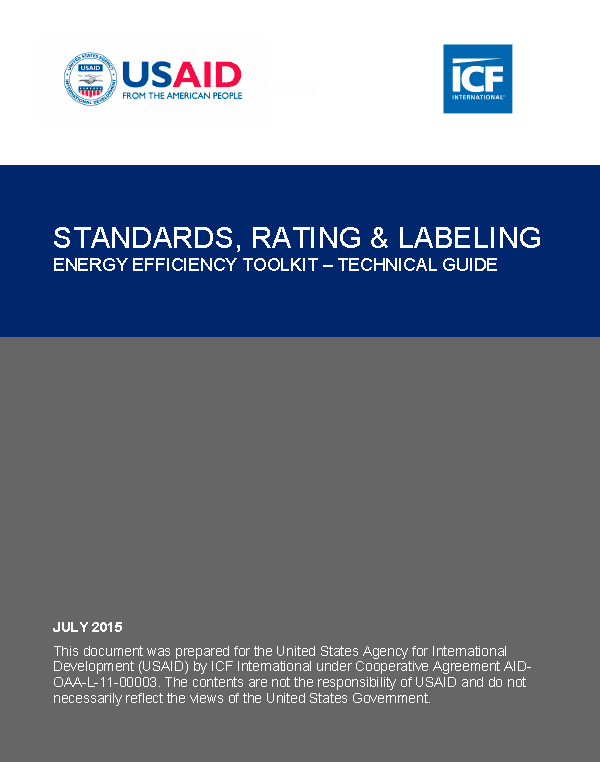There are a variety of approaches to implementing energy efficiency policies and programs. Some designs are better suited for a particular energy sector while others can be applied across multiple sectors.
Based on the policy drivers in a given country—which can include energy efficiency, energy security, economic development, low-emission development strategies, climate resilience and/or municipal capacity building—USAID program managers should first develop a plan that reflects energy use by sector and the applicable technologies. Expand the menu below to learn more about different types of energy efficiency policies and program types. Downloadable technical guides describe key design and implementation considerations for energy efficiency policies, information and education initiatives, incentives and pricing structures, and standards, rating, and labeling schemes. The guides include specific project and program examples from around the world in the residential, commercial, industrial, transportation and agricultural sectors.
Policy
Energy Efficiency Technical Guide: Policy ![]() (pdf - 384k)
(pdf - 384k)
Policies that encourage investments in energy efficiency play a critical role in the success of many programs and initiatives. Without such policies, many economically viable energy efficiency opportunities will remain unexplored despite the fact that investing in energy efficiency is a cost-effective approach to sustainable development.
This technical guide outlines energy efficiency policies that have been successful in developed countries and are adaptable to the developing country context. The types of policies covered in this guide include energy pricing, taxes, efficiency targets and resource planning, energy sector regulation, and a variety of other policies aimed at facilitating the adoption of efficient technologies in the marketplace.
Information and Education
Information and education play an important role in demonstrating to key stakeholders the advantages of choosing to invest in energy efficiency. Initiatives can take the form of public service campaigns, technical and marketing trainings and pilot projects. These initiatives help stakeholders engage with energy efficiency programs and understand how energy efficiency can add value to their households or businesses. They also help demystify the costs of investing in energy efficiency, which in turn promotes the growth and development of the energy services sector.
Incentives and Pricing
Financial and non-financial incentives can help overcome barriers to the adoption of new technologies and behaviors among consumers while energy pricing structures can be designed to drive energy efficiency and conservation. In order for customers to appreciate the true value of energy efficiency, energy pricing should reflect the full cost of electricity production, transmission and distribution as well as take into account any negative externalities incurred along the way. Subsidies will, in general, dilute the perceived benefits of energy efficiency investments made by end-users. Government ministries or regulatory bodies are often best placed to fund and administer these incentive and pricing efforts and may support increased efficiency in low-income and other vulnerable populations. Utilities can also play a significant role in the delivery of energy efficiency programs if enabled by government and regulatory structures.
This technical guide discusses how financial incentives, non-financial incentives and electricity pricing schemes can be harnessed to improve energy efficiency. It also describes the conditions that enable these strategies to be effective.
Standards, Rating and Labeling
Standards, rating and labeling schemes differentiate efficient products and buildings from those that are inefficient by establishing minimum energy performance standards. Such schemes help consumers save money and reduce energy consumption and help governments meet national energy savings goals and greenhouse gas reduction targets. The energy savings potential from efficient products and buildings in the developing world is immense (PDF 4.2MB), particularly as energy demand is predicted to increase dramatically in some developing countries. Promoting efficient products and developing enforceable green building codes can result in energy savings and ensure reliable electricity distribution and improved quality of life for underserved communities.
This guide outlines the essential components of standards, rating and labeling schemes for products and buildings, highlighting key concepts and common challenges.











Comment
Make a general inquiry or suggest an improvement.